#Database Migration
Explore tagged Tumblr posts
Text
The Data Migration Odyssey: A Journey Across Platforms
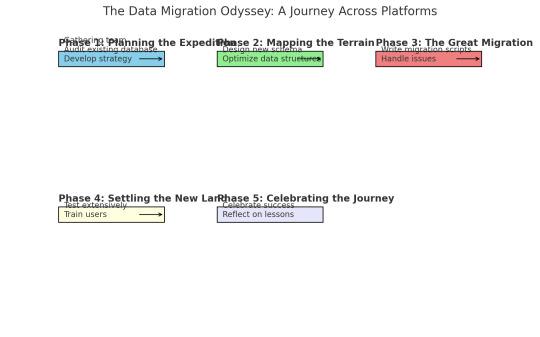
As a database engineer, I thought I'd seen it all—until our company decided to migrate our entire database system to a new platform. What followed was an epic adventure filled with unexpected challenges, learning experiences, and a dash of heroism.
It all started on a typical Monday morning when my boss, the same stern woman with a flair for the dramatic, called me into her office. "Rookie," she began (despite my years of experience, the nickname had stuck), "we're moving to a new database platform. I need you to lead the migration."
I blinked. Migrating a database wasn't just about copying data from one place to another; it was like moving an entire city across the ocean. But I was ready for the challenge.
Phase 1: Planning the Expedition
First, I gathered my team and we started planning. We needed to understand the differences between the old and new systems, identify potential pitfalls, and develop a detailed migration strategy. It was like preparing for an expedition into uncharted territory.
We started by conducting a thorough audit of our existing database. This involved cataloging all tables, relationships, stored procedures, and triggers. We also reviewed performance metrics to identify any existing bottlenecks that could be addressed during the migration.
Phase 2: Mapping the Terrain
Next, we designed the new database design schema using schema builder online from dynobird. This was more than a simple translation; we took the opportunity to optimize our data structures and improve performance. It was like drafting a new map for our city, making sure every street and building was perfectly placed.
For example, our old database had a massive "orders" table that was a frequent source of slow queries. In the new schema, we split this table into more manageable segments, each optimized for specific types of queries.
Phase 3: The Great Migration
With our map in hand, it was time to start the migration. We wrote scripts to transfer data in batches, ensuring that we could monitor progress and handle any issues that arose. This step felt like loading up our ships and setting sail.
Of course, no epic journey is without its storms. We encountered data inconsistencies, unexpected compatibility issues, and performance hiccups. One particularly memorable moment was when we discovered a legacy system that had been quietly duplicating records for years. Fixing that felt like battling a sea monster, but we prevailed.
Phase 4: Settling the New Land
Once the data was successfully transferred, we focused on testing. We ran extensive queries, stress tests, and performance benchmarks to ensure everything was running smoothly. This was our version of exploring the new land and making sure it was fit for habitation.
We also trained our users on the new system, helping them adapt to the changes and take full advantage of the new features. Seeing their excitement and relief was like watching settlers build their new homes.
Phase 5: Celebrating the Journey
After weeks of hard work, the migration was complete. The new database was faster, more reliable, and easier to maintain. My boss, who had been closely following our progress, finally cracked a smile. "Excellent job, rookie," she said. "You've done it again."
To celebrate, she took the team out for a well-deserved dinner. As we clinked our glasses, I felt a deep sense of accomplishment. We had navigated a complex migration, overcome countless challenges, and emerged victorious.
Lessons Learned
Looking back, I realized that successful data migration requires careful planning, a deep understanding of both the old and new systems, and a willingness to tackle unexpected challenges head-on. It's a journey that tests your skills and resilience, but the rewards are well worth it.
So, if you ever find yourself leading a database migration, remember: plan meticulously, adapt to the challenges, and trust in your team's expertise. And don't forget to celebrate your successes along the way. You've earned it!
6 notes
·
View notes
Text
How to Migrate WordPress to GCP Server Using WordOps and EasyEngine
Migrating a WordPress site to Google Cloud Platform (GCP) offers numerous benefits including improved performance, scalability, and reliability. In this comprehensive guide, I’ll walk you through on how to migrate WordPress to GCP using WordOps and EasyEngine, with special attention to sites created with the --wpredis flag. This guide works whether you’re migrating from a traditional hosting…
#cloud hosting#Database migration#EasyEngine#EasyEngine to WordOps#GCP#Google Cloud Platform#How to#rsync#Server migration#Server-to-server WordPress#site migration#Site migration guide#SSH key setup#SSL certificate setup#WordOps#WordOps configuration#WordPress database export#WordPress hosting#WordPress hosting migration#WordPress migration#WordPress Redis#WordPress server transfer#WordPress site transfer#WP migration tutorial#WP-CLI#wp-config
0 notes
Text
DMAP Unveiled: Accelerating Your Path to Effective Database Migration
In the quickly advancing digital landscape, the requirement for efficient and seamless database migration has ended up basic for businesses seeking to remain competitive. This blog will delve into the complexities of DMAP, explore its stages of migration, and highlight how it addresses the challenges faced during database migration. The Stages of Migration in DMAP
DMAP’s structured approach to database migration involves several key stages, each designed to ensure a smooth transition from the source environment to the target environment. 1. Assessment and Planning
This is a crucial step that involves understanding the existing database architecture, identifying the data to be migrated, and evaluating the target environment. During this phase, organizations need to assess the complexity of the migration, determine potential risks, and develop a comprehensive migration strategy.
Key activities during this stage include:
Database Assessment: Understanding the current database structure, data volume, and performance requirements.
Environment Analysis: Evaluating the target environment’s compatibility and performance capabilities.
Risk Identification: Identifying potential risks and challenges that may arise during the migration process.
Migration Strategy Development: Making a detailed migration arrangement that traces the steps, timelines, and assets required.
2. Data Preparation
Once the planning is complete, the next stage is data preparation. This involves cleaning, transforming, and preparing the data for migration. Data preparation is critical to ensure that the data is in a suitable format for the target environment and that any unnecessary or obsolete data is removed.
Key activities during this stage include:
Data Cleansing: Identifying and removing duplicate, obsolete, or irrelevant data.
Data Transformation: Converting data into a format compatible with the target environment.
Data Validation: Ensuring that the data is accurate, complete, and ready for migration.
3. Migration Execution
The migration execution stage is where the actual data transfer takes place. This stage involves moving the data from the source environment to the target environment using automated tools and processes. DMAP typically employs advanced data replication and synchronization techniques to ensure that the migration is seamless and that data consistency is maintained throughout the process.
Key activities during this stage include:
Data Transfer: Moving data from the source to the target environment using automated migration tools.
Data Synchronization: Ensuring that the data remains consistent and up-to-date in both environments during the migration.
Performance Monitoring: Continuously monitoring the migration process to identify and address any performance issues.
4. Testing and Validation
After the data has been migrated, the next stage is testing and validation. This is a critical phase where the migrated data and systems are thoroughly tested to ensure they function correctly in the new environment. Testing helps identify any issues that may have arisen during the migration and ensures that the data is accurate and accessible.
Key activities during this stage include:
Functional Testing: Verifying that the database functions as expected in the new environment.
Performance Testing: Assessing the performance of the migrated database to ensure it meets the required standards.
Data Validation: Ensuring that the migrated data is accurate, complete, and consistent.
5. Optimization and Go-Live
The final stage of DMAP is optimization and go-live. Once the testing and validation are complete, the database is optimized to enhance its performance in the new environment. This may involve fine-tuning database configurations, optimizing queries, and ensuring that the database is fully integrated with other systems.
Key activities during this stage include:
Performance Tuning: Optimizing database performance by adjusting configurations and queries.
System Integration: Ensuring that the database is fully integrated with other systems and applications in the new environment.
Go-Live: Moving the database into production and making it accessible to users.
6. Post-Migration Monitoring and Support
Even after the migration is complete, ongoing monitoring and support are essential to ensure the long-term success of the migration. This involves continuously monitoring the database for any issues, providing support to users, and making any necessary adjustments to maintain optimal performance.
Key activities during this stage include:
User Support: Providing support to users to address any issues or concerns that arise post-migration.
Continuous Improvement: Making ongoing adjustments and improvements to optimize database performance.
The Solution for Risk-Free, Efficient Database Migration Database migration is a critical process that enables organizations to transition their data from outdated or less efficient systems to modern, scalable environments, often involving a shift to cloud-based platforms. This migration is essential for leveraging new technologies, improving system performance, and enhancing data accessibility and security. The Database Migration Acceleration Platform (DMAP) addresses these challenges by offering a structured, automated approach that ensures a seamless transition. Streamline Your Data Transition: The Power of DMAP in Migration Management
In an increasingly digital world, the Database Migration Acceleration Platform (DMAP) stands out as a crucial tool for organizations seeking efficient and secure database migrations. By providing a structured approach that covers every stage of the migration process—from assessment and preparation to execution and optimization—DMAP minimizes risks and accelerates the transition. Thanks For Reading
For More Information, Visit Our Website: https://newtglobal.com/
0 notes
Text
A DBA's Checklist for Decommissioning a SQL Server
As a DBA, one of the more stressful tasks that occasionally lands on your plate is having to decommission a SQL Server. Maybe the hardware is being retired, or databases are being consolidated onto fewer servers. Whatever the reason, it’s a delicate process that requires careful planning and execution to avoid data loss or business disruption. I still remember the first time I had to…

View On WordPress
0 notes
Text
5 notes
·
View notes
Text
I love it when I fire up my Star Wars randomizer and it opens immediately because that means that someone else is using it and I'm happy it's useful ^^
#I'm not gonna pay Netlify for metrics so I don't actually know how active it is#But it's good to know that even after a couple years it's not dead#I need to do some more work on that sucker#I'd like to migrate the data into an actual database#and have more fine-tuned options for filtering things#but that is a HUGE chunk of data I just threw into a JSON file#and I'd need to round the data out#not just dump it into mongo or something#yikes-a-roonie#star wars#technically#sw-randomizer
4 notes
·
View notes
Text
also, if you're a regular around here and you want a free cloud based RSS reader and you're fine with zero uptime guarantees and the risk of me being able to see what feeds you read, hit me up for an account on my FreshRSS instance.
#already set up one of these so it definitely works!#you can import/export opml so it should be easy to migrate from a local reader too#i prommy not to read your feed database but you have no way of proving that
12 notes
·
View notes
Text
The Money In Cleanup
I have an acquaintance that helps migrate businesses off of ancient and inappropriate databases onto more recent ones. If you wonder how ancient and inappropriate let me simply state “not meant for industry” and “first created when One Piece the anime started airing” and you can guess. Now and then he literally goes and cleans up questionable and persisting bad choices.
In the recent unending and omnipresent discussions of AI, I saw a similar proposal. A person rather cynical about AI mused someone might make a living in the next few years backing a company’s tech and processes OUT of AI. Such things might seem ridiculous, until you consider my aforementioned acquaintance and the fact he gets paid to help people back out past decisions. Think of it as “migration from a place you shouldn’t have migrated to.”
It’s weird to think in technology, which always seems (regrettably) to be about forward motion and moving forward that there’s money in reversing decisions. Maybe it was the latest thing and now it’s not, or maybe it seemed like a good idea at the time (it wasn’t), but now you need someone to help you get out of your choice. Fortunately there are people who have turned “I told you so” into a service.
I find these “back out businesses” to be a good and needed reminder that technology is really not about forward. Yeah, the marketing guys and investors may want it, but as anyone who’s spent time in the industry knows, it’s not the case. Technology is a tool, and if the tool doesn’t work or is a bad choice, you want out of it. The latest, newest, fasted is not always the best - and may not be the best years later. Technology is not always about forward, even if someone tells you it is (before they sell you yet another new gizmo).
Considering the many, many changes in the world of tech, from social media to search to privacy, I wonder how much more “back out businesses” might evolve. Will there be coaches to get you to move to federated social media? How can you help a company get out of a bad relationship with a service vendor with leaky security and questionable choices? For that matter can we maybe take a look at better hosting arrangements and websites that aren’t ten frameworks in a trenchcoat?
I don’t know, and the world is in a terribly unpredictable state. But I’m amused to think that somewhere in my lifetime the big tech boom might be “oops, sorry.” Maybe we can say “moving away is really moving forward,” get some TED talks, and make not making bad immediate choices cool.
Steven Savage
www.StevenSavage.com
www.InformoTron.com
3 notes
·
View notes
Text

bunnification~ character: shibbuns art/animation: saltiestbun
#pixelart#pixel art#animation#stream avatars#bunnifications#pixels#oh gosh how many tags am i allowed to put before it stops registering in the search database i haven't used this site in years#migrating from twitter please be gentle#saltie art#saltiestbun#oc: shibbuns#hocus pocups cafe#pixel animation
8 notes
·
View notes
Text
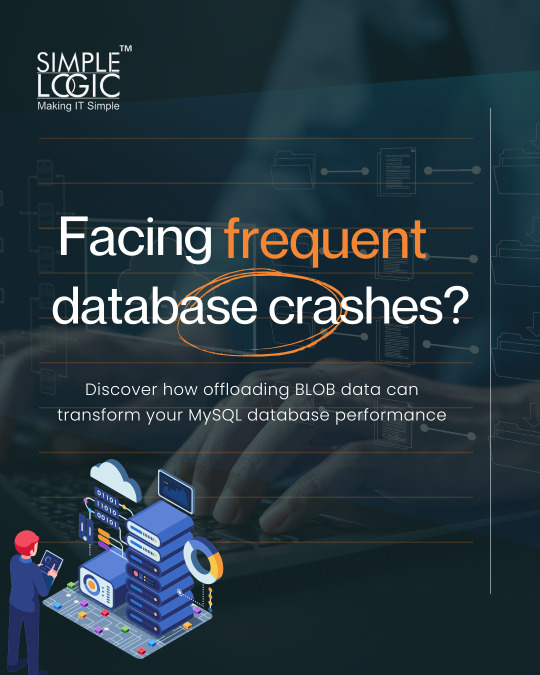
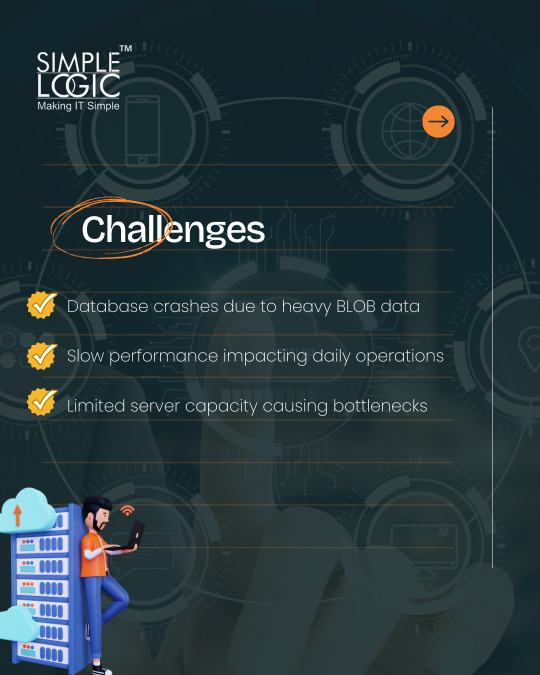
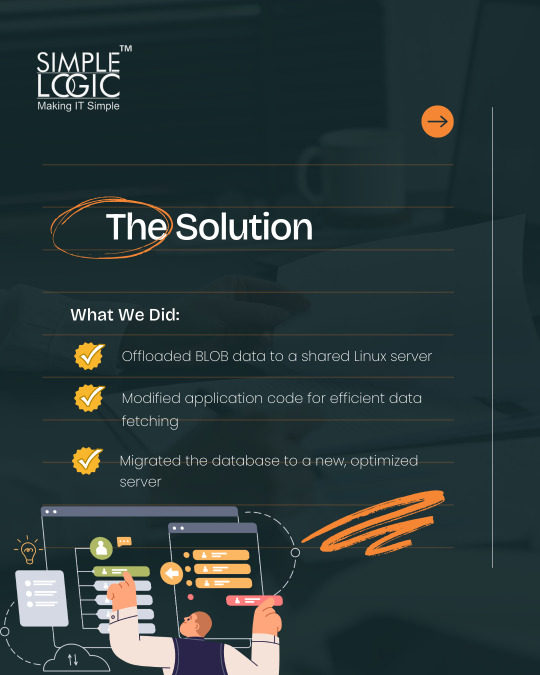
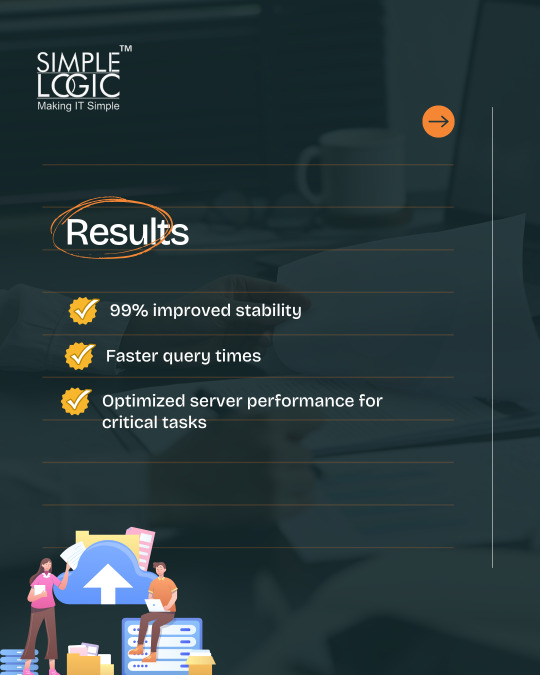
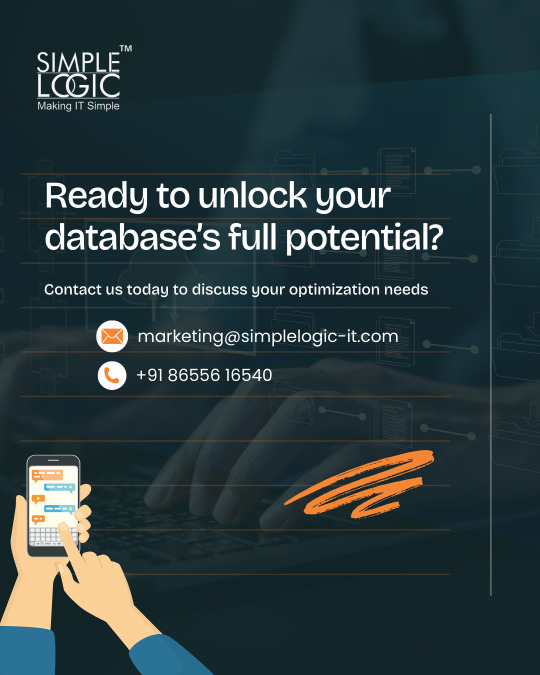
Transform Your Database Performance with Simple Logic!
Challenges: Database crashes caused by heavy BLOB data 📉 Slow performance impacting daily operations 🕒 Limited server capacity leading to bottlenecks 🚧
Our Solution: Offloaded BLOB data to a shared Linux server for improved efficiency 🖥️ Enhanced application code for seamless data fetching 🛠️ Migrated the database to a new, optimized server for better performance 🚀
The Results: 99% improved stability ✨ Faster query times ⏩ Optimized server performance, enabling critical tasks to run smoothly 🎯
Say goodbye to database crashes and hello to high performance! Let Simple Logic elevate your database optimization today. 🌟
💻 Explore insights on the latest in #technology on our Blog Page 👉 https://simplelogic-it.com/blogs/
🚀 Ready for your next career move? Check out our #careers page for exciting opportunities 👉 https://simplelogic-it.com/careers/
👉 Contact us here: https://simplelogic-it.com/contact-us/
#Data#Database#DatabaseService#DataBasePerformance#SlowPerformance#Applications#DataFetching#Linux#Migration#BLOB#MySQL#Stability#SimpleLogicIT#MakingITSimple#MakeITSimple#SimpleLogic#ITServices#ITConsulting
0 notes
Text
Åtgärda Alembic-fel i Flask: En steg-för-steg-guide
Nu när jag nästan var klar med min nya hemsida, bara lite puts kvar så började plötsligt mina databasmigreringar att strula. Please edit configuration/connection/logging settings in 'C:\\Users\\maria\\Documents\\PyCharmProjects\\MittProjekt\\migrations\\alembic.ini' before proceeding. Detta är vad jag fann för att rätta till problemet: Varför visas felet “Please edit…
0 notes
Text
Plan with a trusted Odoo migration company – CaretIT
If you’re seeking an Odoo migration company with experience across industries and platforms, CaretIT is here to assist. Our method involves evaluating your current Odoo version, building a roadmap for transition, and ensuring that both native and custom modules move correctly. With full documentation, risk assessments, and a post-migration testing phase, we deliver a structured upgrade to your ERP system. Being a focused Odoo migration company, we support version jumps and data model changes without compromising accuracy or workflow. Our goal is to simplify the shift and reduce effort for internal teams. Let us know how we can help realign your system with a tailored migration plan.

CaretIT stands as a skilled Odoo migration company focused on safe, well-documented ERP version transitions and data preservation.
youtube
0 notes
Text

Discover how effective data migration ensures Salesforce implementation success. Learn best practices and strategies to maintain data integrity during your CRM transition.
#Salesforce data migration#CRM data integration#Salesforce implementation best practices#Data migration strategies#Ensuring data integrity in Salesforce#Digital transformation in CRM#Cloud data migration#Database to Salesforce migration#Salesforce implementation strategies#Business data migration solutions
0 notes
Text
Unlocking the Potential of DMAP for Streamlined Database Migration
Data is the soul of any organization. As businesses progress, so do their data needs, requiring the migration of databases to more efficient, scalable, and secure environments. This is often when the Database Migration Acceleration Platform (DMAP) comes into play. DMAP is designed to streamline and expedite the complex process of database migration. This blog will dive into why DMAP is essential for organizations and the challenges they face in database migration. Driving Factors Behind Database Migration for Organizational Change Database migration is the method of exchanging information from one database to another. This can involve moving data from on-premises to the cloud, from one cloud provider to another, or upgrading to a newer database version. The primary reasons organizations undertake database migration include:
Technological Advancement: Modern databases offer better performance, enhanced security features, and greater scalability.
Cost Efficiency: Cloud-based databases can significantly reduce infrastructure and maintenance costs.
Regulatory Compliance: New regulations may require organizations to update their databases to meet compliance standards.
Business Growth: As businesses expand, their data requirements grow, necessitating a more robust database solution
Challenges Faced by Organizations in DMAP- Database Migration Acceleration PlatformComplexity of Data Migration
Despite the automation and tools provided by DMAP, the migration process remains inherently complex. The complexity arises from the need to move vast amounts of data across different database environments, each with unique structures and schemas. This complexity increases with the size of the database and the specific requirements of the migration project. Data Integrity and Consistency
Data must be accurately extracted, transformed, and loaded into the new database without any loss or corruption. Even with automated tools, there is a risk of data discrepancies, which can have serious implications for business operations and decision-making.
Compatibility and Integration Issues
Different database systems often have varying structures, data types, and schemas. Ensuring compatibility between the source and target databases is essential but challenging. DMAP must handle these differences seamlessly, which can be difficult when dealing with complex data relationships and dependencies.
Resource and Skill Constraints
Implementing and managing a DMAP requires skilled personnel with expertise in database administration, migration tools, and the specific databases involved. Many organizations face resource constraints, making it challenging to allocate the necessary manpower and expertise for a successful migration. Training and upskilling staff to use DMAP effectively also add to the resource burden.
Customization and Scalability
Every organization has one-of-a-kind information needs and relocation necessities. Customizing DMAP to fit these particular needs can be challenging. Moreover, as organizations grow, their information needs evolve. Ensuring that DMAP can scale to accommodate increasing information volumes and complexity is critical but can pose critical challenges. Leveraging DMAP and Newt Global for Optimal Results While the Database Migration Acceleration Platform (DMAP) offers powerful tools and automation to facilitate database migration, organizations must navigate several challenges to achieve a successful migration. Ensuring data integrity, managing downtime, addressing compatibility issues, maintaining security, and allocating skilled resources are all critical factors that require meticulous planning and execution. Newt Global brings extensive experience and expertise in handling various migration scenarios, including on-premises to cloud, inter-cloud, and database upgrades. Their comprehensive approach ensures that each migration is tailored to the specific needs of the organization, addressing potential risks and minimizing downtime. By leveraging Newt Global's proven methodologies and robust tools, businesses can achieve a smoother migration process, maintaining data integrity and security throughout. In an era where data is a critical asset, partnering with Newt Global for DMAP implementation is a smart move to ensure your organization remains competitive and resilient in the face of evolving technological demands. Incorporating Newt Global’s services into your migration strategy can significantly enhance efficiency, reduce costs, and support business growth. By addressing the complexities of database migration with a trusted partner like Newt Global, organizations can confidently navigate their migration journey, achieving a successful transition that meets their technological and business objectives. Investing in DMAP with Newt Global is not just a strategic decision but a necessary step toward future-proofing your data infrastructure.
Thanks For Reading
For More Information, Visit Our Website: https://newtglobal.com/
0 notes
Text
Resolving SQL Server Upgrade Error 3013 during Database Restore
Introduction Have you ever encountered the dreaded error 3013 while trying to restore a database from an older SQL Server version to a newer one? I know I have, and it can be quite frustrating! In this article, we’ll dive into what causes this error and explore step-by-step solutions to help you successfully migrate your database without pulling your hair out. Understanding Error 3013 Error…
View On WordPress
0 notes